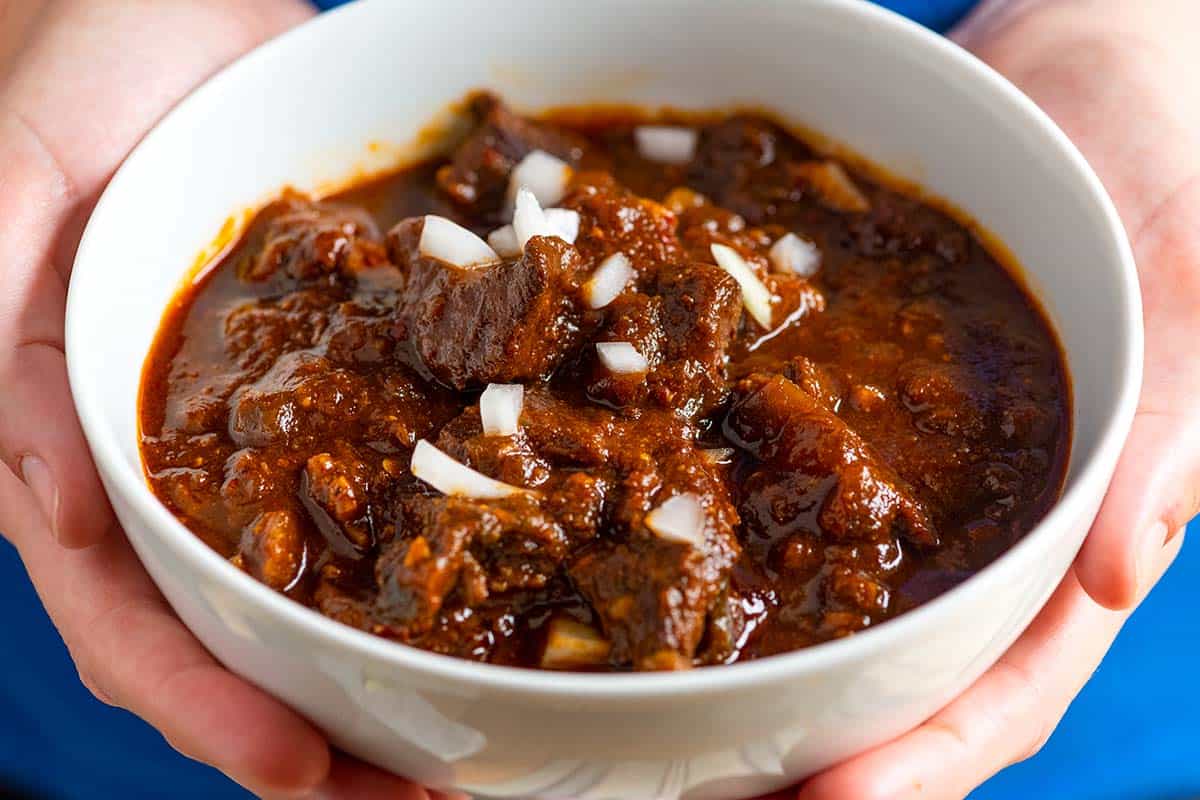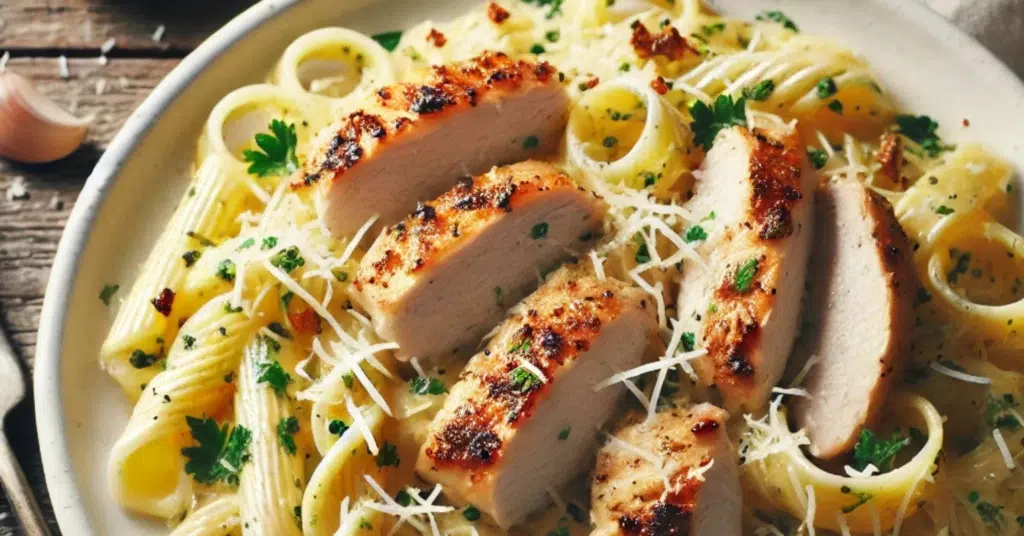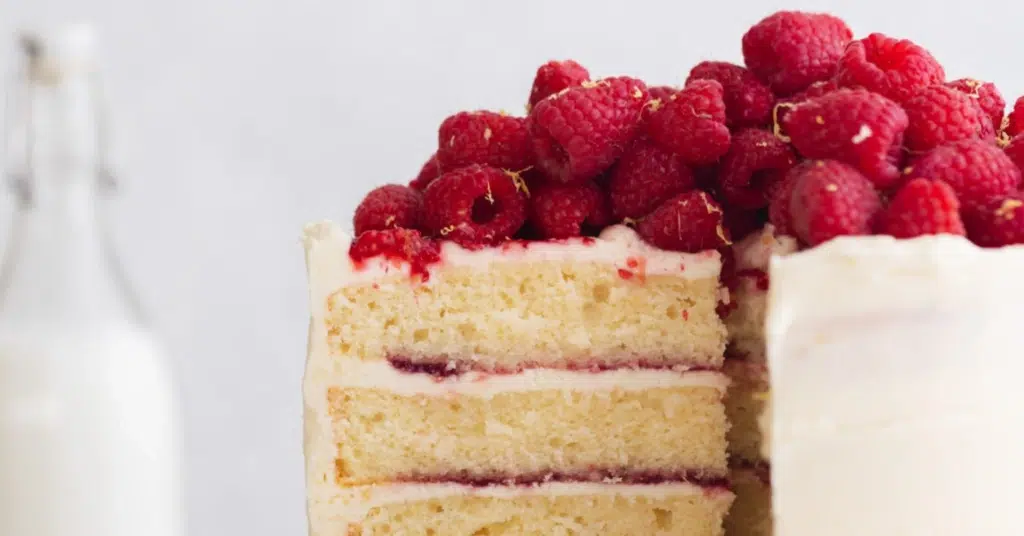What are the different types of flour, why are there so many, and what are they for? I’m here to break it down for you!
There are a surprising varieties of flour available these days. It’s hard to keep track of how many are even available at this point, and I’m constantly learning about new ones (for example, I’d never heard of mesquite flour until I shared a gingerbread pumpkin ice cream sandwich recipe from my friend Alanna’s cookbook).
While they share a common name, different types of flour can vary quite a bit in terms of their base ingredients, how those ingredients are processed, and how they’re used in baking.
Before we dive in to the different options, let take a quick look at everyone’s favorite word: gluten.
What is Gluten?
Wheat, rye, and barley contain two proteins called glutenin and glaiden. When water is combined with these proteins, they bond together and form an elastic network called gluten. The more you mix and knead dough and batter, the stronger and more elastic these strands become.
This is why some doughs are kneaded for longer than others, and why some baked goods are more chewy and firm than others. Less gluten will result in baked goods and are lighter and more tender.
The percentage of gluten in flour will vary depending on what type of flour is being used, and sometimes that amount will vary slightly between brands.
If you’d like to go deeper into the science behind gluten, this article from Baker Bettie is all about gluten.
Bleached Vs. Unbleached Flour
Bleached flour is treated with chemicals that speed up the aging process, making it softer and lighter. It helps create baked goods that are more tender, have more volume, and are a bit brighter in color.
Unbleached flour has an off-white color and is a little more dense than the bleached version. It’s allowed to age naturally, and therefore takes longer for a manufacturer to produce, making it more expensive.
Different Types of Flour
ALL-PURPOSE
All-purpose flour is the most commonly used in recipes, useful in everything from cookies to pancakes and quick breads to pizza doughs. Also known as white flour, it’s made from shelled wheat kernels. Typically, it is 10-13% gluten content.
Check out my full archive of recipes using all-purpose flour! Some of my recent favorites include peanut butter cookies, carrot cupcakes, and rum cake.
WHOLE WHEAT FLOUR
Whole wheat flour is less processed than all-purpose flour. Made from the endosperm, bran and germ, with the wheat kernel still attached. As a result, it is dense and textured, but also very rich in nutrients. Whole wheat flour typically has around 14% gluten content.
It has an earthy flavor that can be wonderful in doughs. I like using a blend of whole wheat and all-purpose when I want to infuse the flavor of the whole wheat into dough without creating a heavy consistency.
Check out my full archive of recipes using whole wheat flour! My favorites include these whole wheat english muffins and pumpkin muffins.
CAKE FLOUR
Cake flour is also made from wheat, but it’s milled to be very fine. It’s also typically bleached. It has much less gluten (6-8%), which creates a soft, tender texture in baked goods. Of all the wheat flours available, cake flour has the least amount of gluten.
To see cake flour in action, check out my classic white cake and vanilla cupcakes with chocolate buttercream!
PASTRY FLOUR
As the name implies, this variety is perfect and designed especially for making pastries. While it’s a little stronger than the cake variety, with 8-9% gluten, it’s not as tough as all-purpose flour.
Use pastry flour in order to give your baked goods a softer texture without changing it dramatically. Waffles, tarts, cookies and muffins are all fantastic when made with pastry flour.
If you need a substitute, use a 2:1 ratio of cake flour to all-purpose flour. So, if a recipe calls for 3 cups of pastry flour, use 2 cups of cake flour and 1 cup of all-purpose flour.
BREAD FLOUR
Bread flour is a high protein flour (12-14%) that’s often used in yeast breads. The extra protein produces more gluten, which often means a chewier bread and a better rise. Keep in mind that if a recipe calls for bread flour, you can often still substitute all-purpose flour and get perfectly fine results.
Try using it in my homemade pretzel buns or cinnamon raisin bagels!
LESS COMMON TYPES OF FLOUR
SELF-RISING
Self-rising flour is all-purpose, but with the addition of salt and baking powder. It’s common to find it in Southern recipes like biscuits, cornbread and cobblers. It’s also pretty simple to make from scratch, which is why I don’t keep it around (more on that below).
RYE
Rye flour is made from (you guessed it) rye. The rye grain is ground and processed to create a flour that is tangy and dark. It’s great for rye bread, and will actually help bread stay fresh longer. You’ll see both dark, light and even medium rye flour for sale, while some packaging simply says “rye flour.” Cook’s Illustrated goes into the details, if you’re interested.
To be honest, I rarely bake with this variety, but it is good for feeding sourdough starter. This article from The Perfect Loaf explains why rye and sourdough go so well together.
Gluten-Free Flour
Many people have gluten allergies or sensitivities, making it difficult for them to digest anything made with traditional wheat, rye, or barley. This has spawned a huge industry for alternative flours and gluten-free blends.
However, using a gluten-free flour can be tricky since, as you now know, gluten plays a huge role in baking. That being said, there are tons of amazing gluten-free baked goods out there. It’s an art form (one that I’m not very good at).
Let’s look at a few popular gluten-free flours. This list is not all-inclusive.
Gluten-Free Flour Blends
There are many gluten free blends on the market that you can use in place of flour with a 1:1 ratio. These blends are typically made from rice, corn, potato, tapioca, arrowroot, flax meal and even quinoa.
They are blended to act like an all-purpose flour and are great to use in many baked goods. However, you want to read the packaging to see what the recommended uses are. Many of these blends will not work properly with yeast recipes.
NUT FLOUR
Nut flours are simply made by grinding nuts until they’re a fine texture. You can make your own nut flour at home using a food processor. The most commonly found option is almond flour, which is often sold as almond meal.
Baking with almond flour creates dense, nutty, slightly oily baked goods. I love using almond flour in snowdrop cookies, and grain-free pizza crust!
RICE FLOUR
Rice flour is a finely milled flour made from ground rice, both white and brown. All varieties of rice flour are completely gluten-free, even if the packaging says “glutinous rice flour,” which is an ingredient commonly used in Japanese desserts.
Rice flour is often used in gluten-free baked goods to give them structure and substance, but it has a variety of other culinary uses are well, such as thickening and dredging.
OTHER TYPES OF FLOUR FOR GLUTEN FREE RECIPES
Here are a few more alternative flours you might see at the grocery store:
- Corn Flour
- Tapioca Flour
- Oat Flour
- Coconut Flour
- Chickpea Flour
For a more comprehensive list of gluten-free flours, check out this article from Spoon University.
General Information
STORAGE and SHELF LIFE
All types of flour should be stored in a food safe, airtight container in a cool, dry place. You can opt to keep flour in the fridge or freezer as well to extend its shelf life. Flour can be kept at room temperature for about a year, in the fridge for about two years or in the freezer indefinitely.
THE CORRECT WAY TO MEASURE FLOUR
For baked goods (as well as desserts like custard and ice cream), I always recommend using a kitchen scale.
It is always best to measure flour by weight instead of volume. Weight (ounces, grams, etc) will always give an accurate measurement of dry goods; volume (cups) can created varied results.
A cup of flour can weigh anywhere from 3 1/2 to 5 ounces. This can make a big difference in your recipe! If you still want to use standard measuring cups, there is a proper technique to ensure that you get the best results possible.
My post How to Measure Flour explains all of this in more detail.
MAKING YOUR OWN BLENDS
There’s no need to run to the store every time you need cake flour, bread flour, or self-rising flour. Learn how to make flour substitutes with this easy tutorial!
OTHER INGREDIENT GUIDES
If you love this guide, be sure to check out What Are Shallots?, Types of Sugar and How To Use Them, and Types of Salt and How To Use Them.
You can also see my full archive of ingredient guides here!










